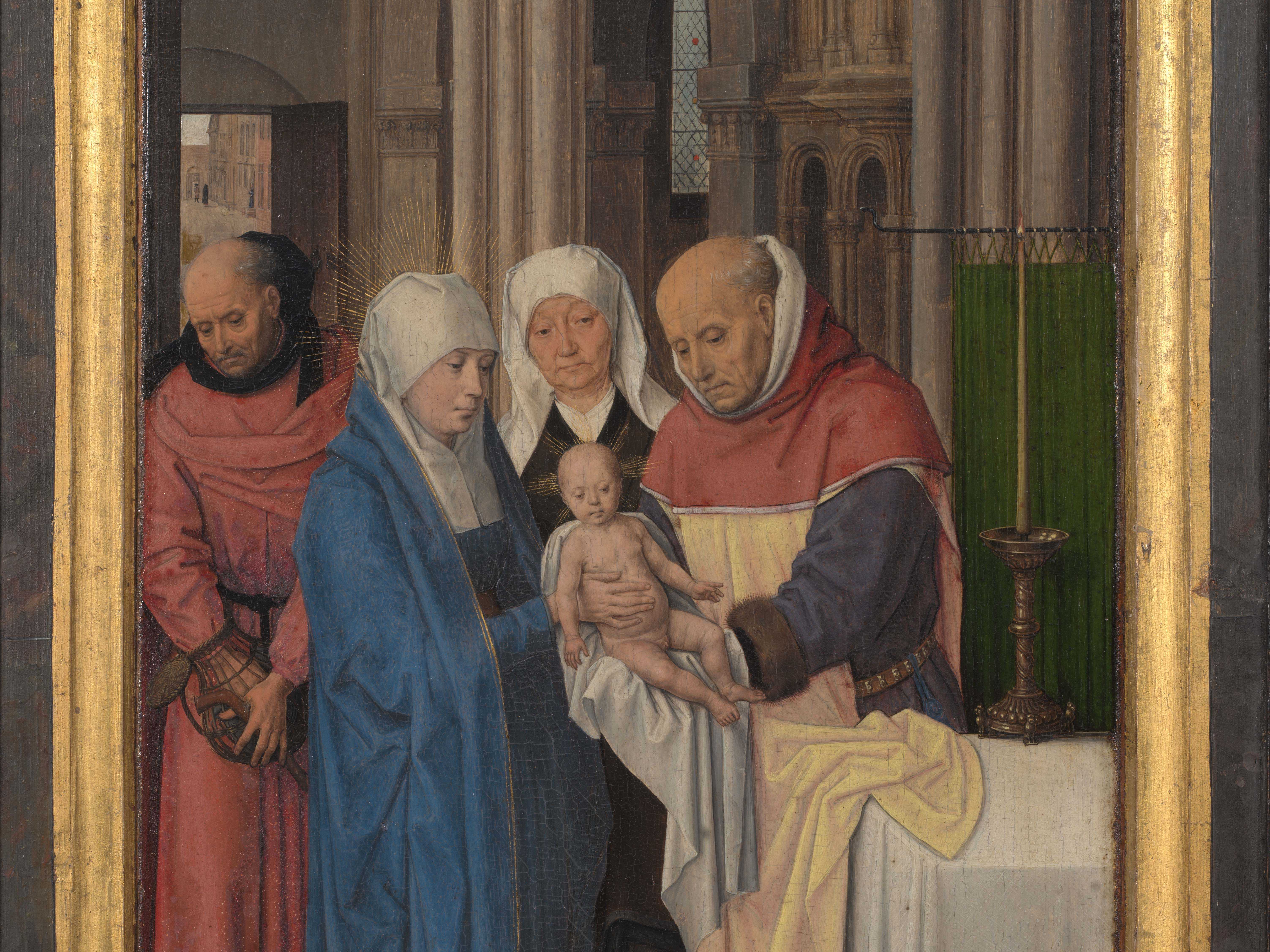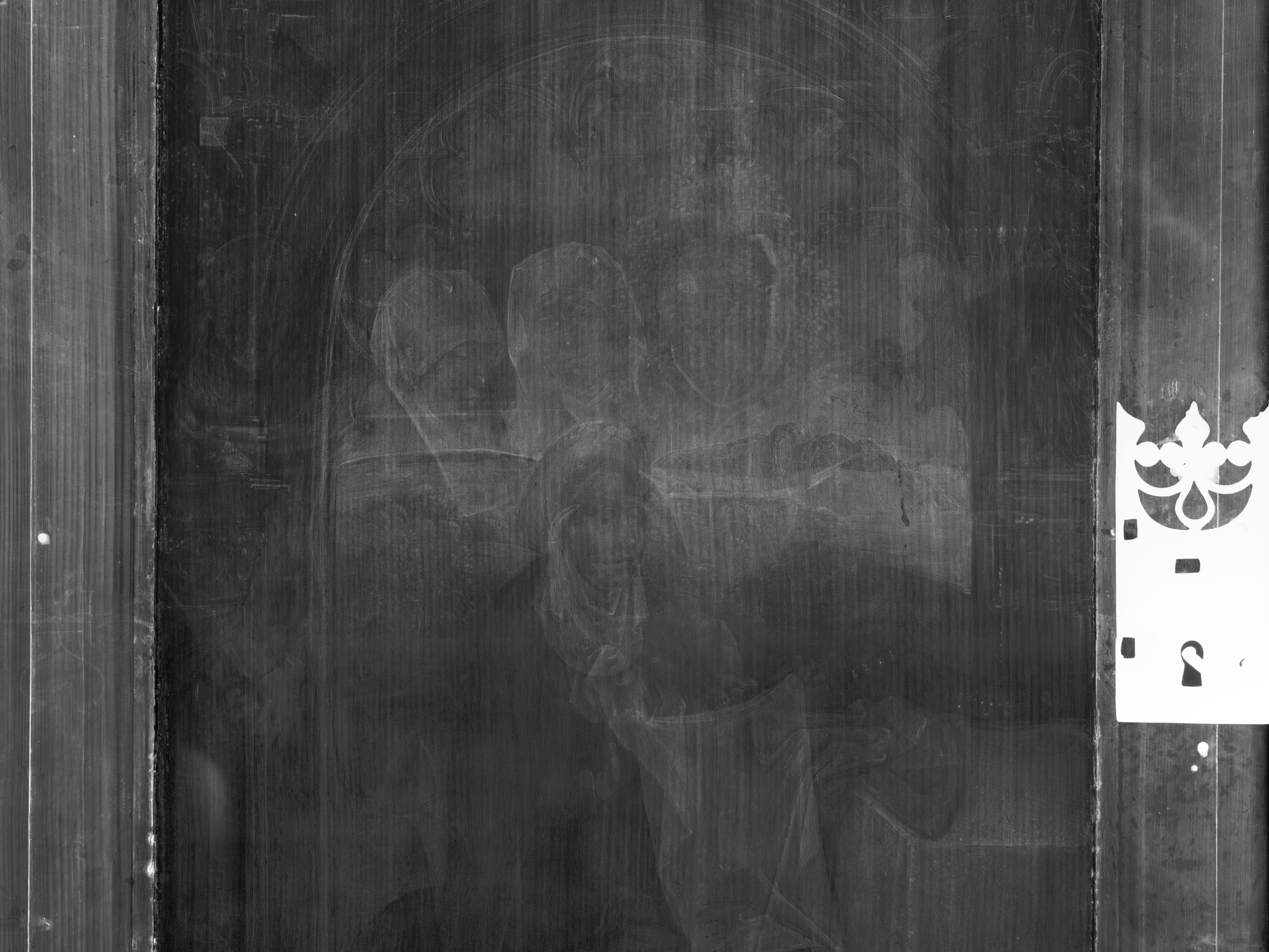Techniques
Research through the layers of paint
Technical examination is used to study Hans Memling’s paintings. This is a method within art history that applies the latest scientific techniques to examine the various layers that make up a painting. This kind of research provides valuable information about the condition the paintings, but also about the artist’s working method.
This allows us to get to know an artwork down to the smallest details and preserve it properly for future generations. The Royal Institute for Cultural Heritage (KIK-IRPA) used four modes of macro photography and infrared reflectography to research and document Hans Memling’s paintings. Read on to learn more about these techniques.
Research technique 1: Macro photography
If you look closely at Hans Memling’s paintings, you will probably notice that they are incredibly detailed. If you were to take a photograph of the work and zoom in on the details, the image quickly becomes grainy. In macro photography, several photographs are taken of small sections of a painting, sometimes as small as 7.5 x 10 cm. These are then digitally joined together – this is called stitching. This gives you a very high-resolution image, so you can zoom in endlessly and the image remains razor-sharp. Ideal for discovering all the details that Memling put into his paintings!
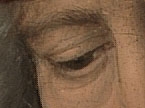
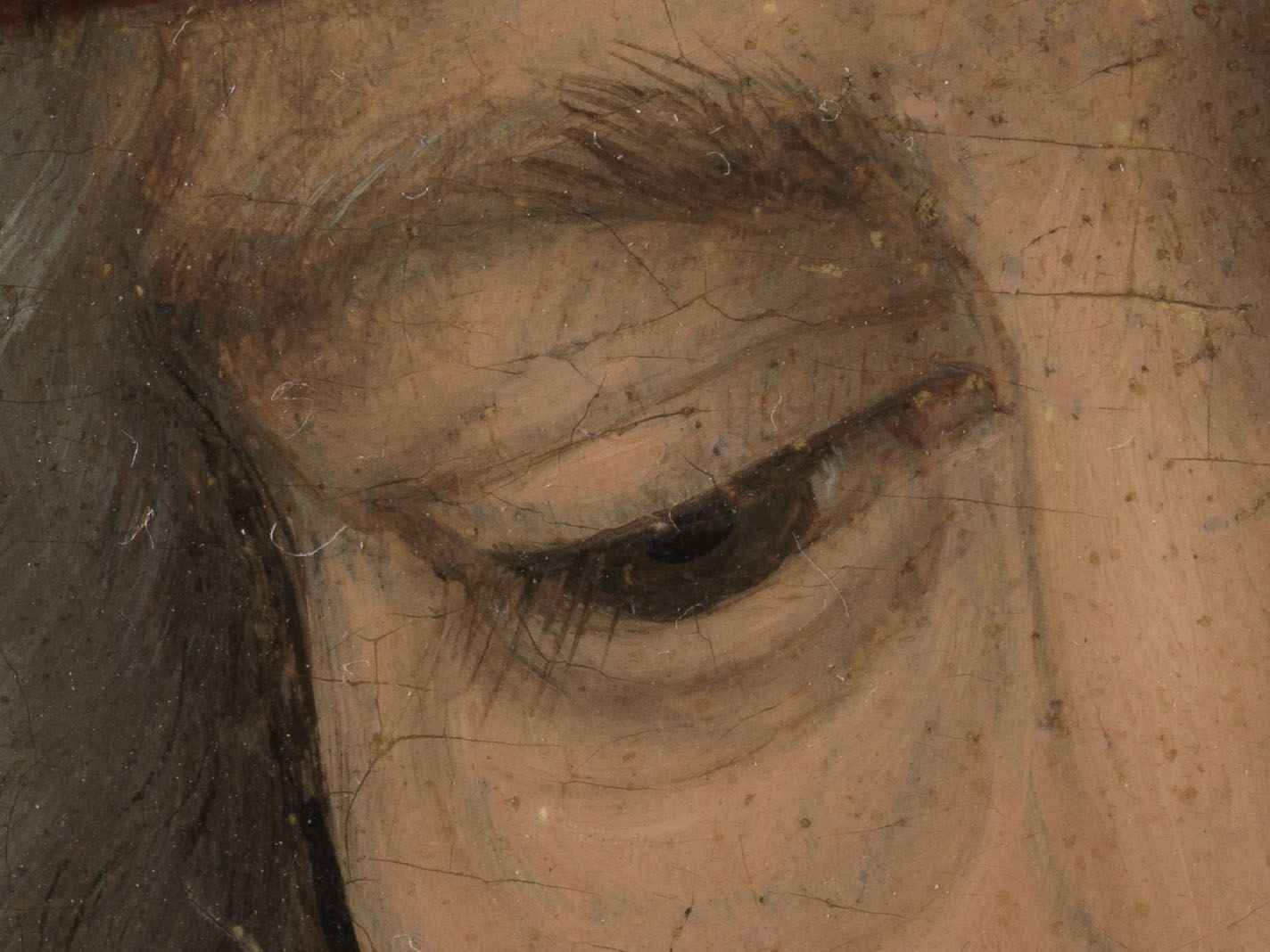
Macro photography: Visible light
Electromagnetic radiation surrounds us. Simply put, it is the movement of electrical and magnetic waves through space. This happens without us noticing. Most electromagnetic radiation – such as ultraviolet radiation, infrared and radio waves – are invisible. The part that we, as humans, can see with the naked eye is called ‘light’ – or better said, ‘visible light’. Visible light consists of the same colours that you see in a rainbow: red, orange, yellow, green, blue, indigo and violet. Normal photography makes use of visible light. It captures what we can also see with our eyes. And by looking very closely at works of art, you can learn a great deal.
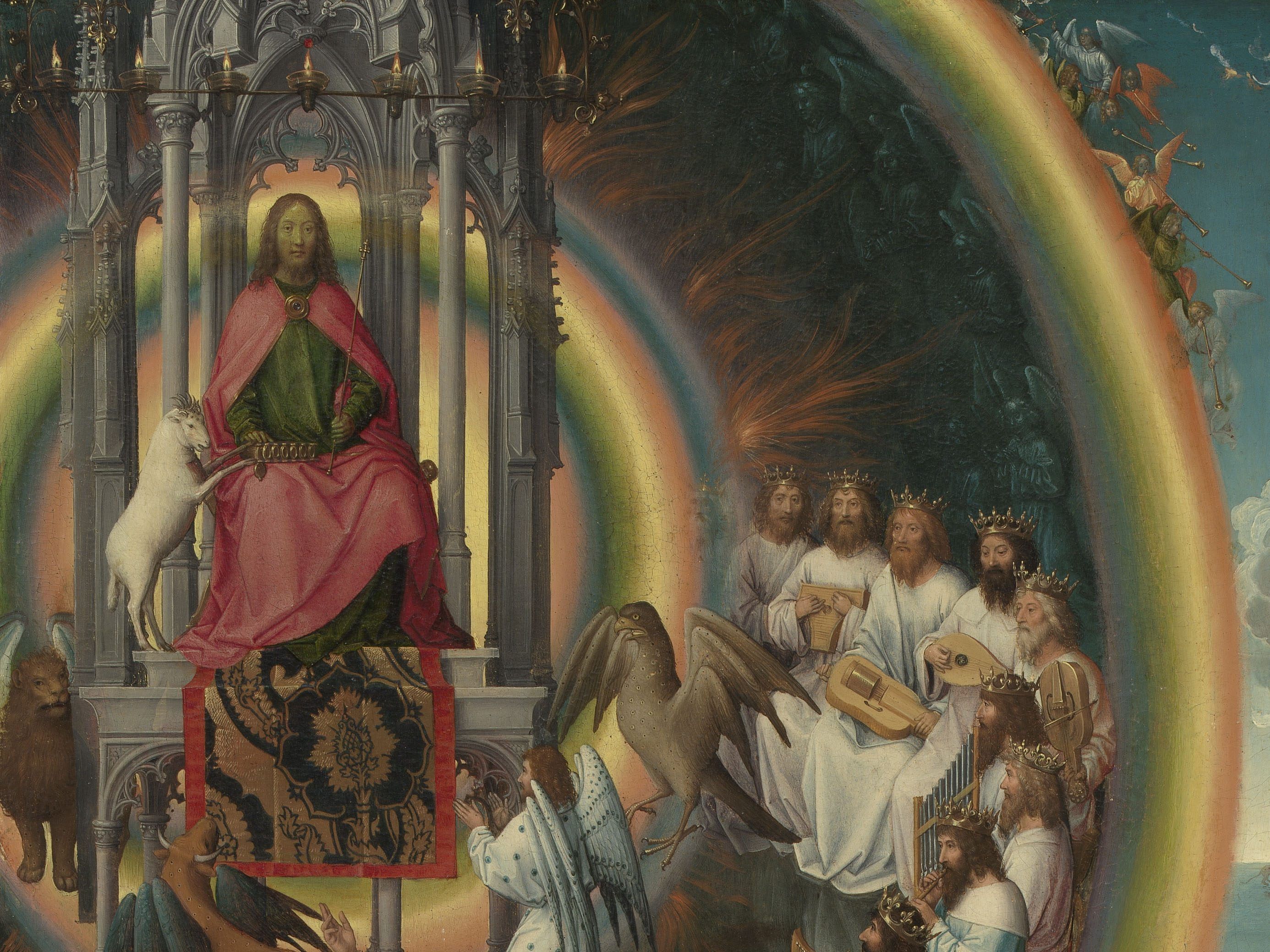
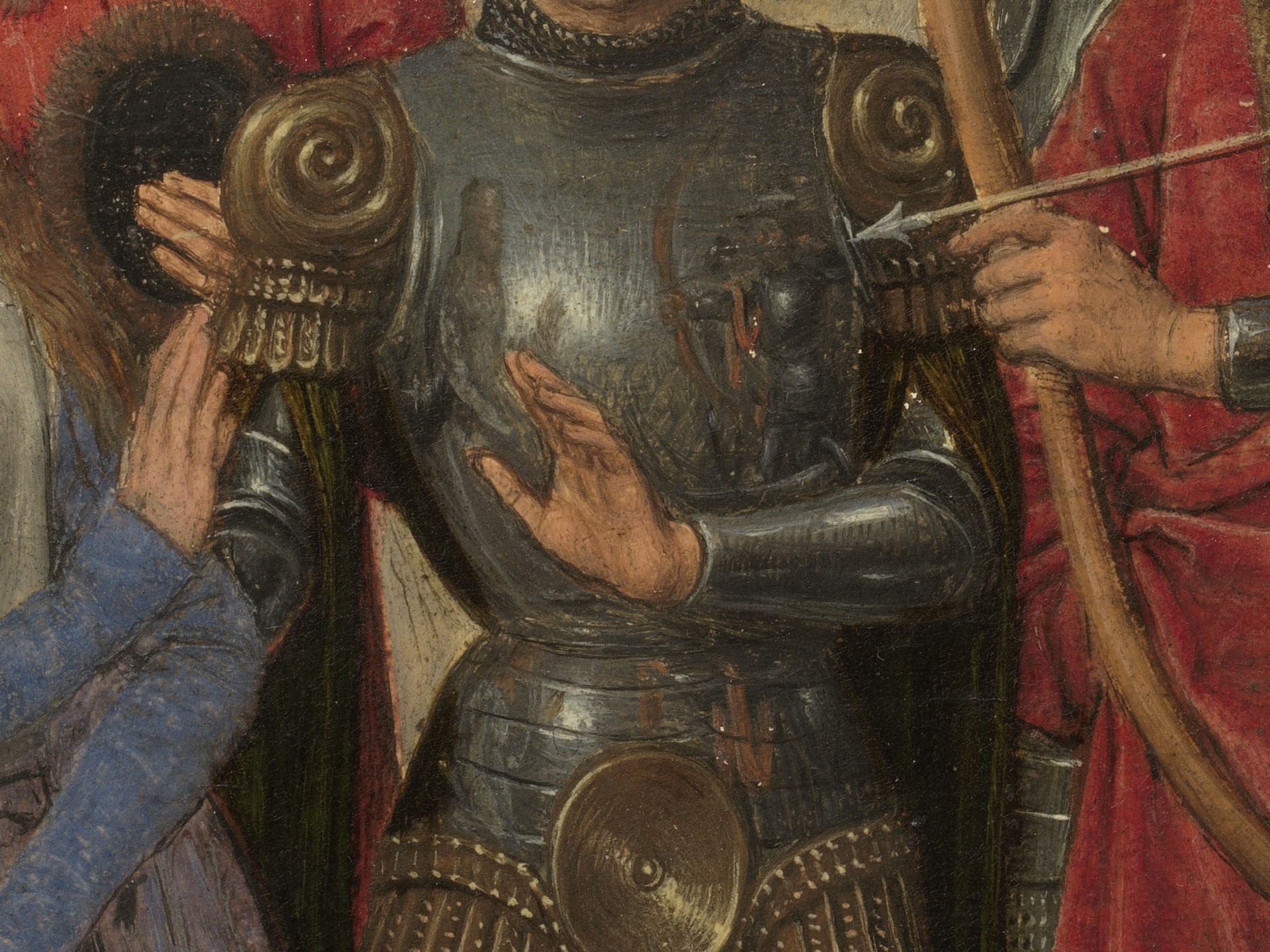
Macro photography: Raking light
Raking light is another way of applying visible light. This technique involves illuminating the painting intensely from one side so that the structure of the surface becomes clearly visible. Raised layers of paint are exposed, while deeper areas are cast in shadow. This is very efficient when dealing with thick paint. It allows art historians to study an artist’s brushstrokes. Hans Memling painted with oil paint, which makes the structure much flatter. Thanks to macro photography, we can still study these fine brushstrokes. In this case, raking light is particularly valuable for conservators to determine the condition of a painting. That is, it shows possible damages to and tenting of the paint layers.


Macro photography: Ultraviolet fluorescence
Ultraviolet radiation lies just outside the spectrum of visible light and therefore we cannot see it with the naked eye. Just as UV radiation is harmful for your skin, it can also damage works of art, especially works on paper. When you apply UV radiation to certain materials, they ‘fluoresce’, meaning that they light up and become visible to the naked eye. When UV radiation is directed towards a painting, the radiation does not penetrate beyond the varnish. This then fluoresces and turns bluish-purple, or violet. Retouches (small overpaintings to hide damage) turn dark and thus show up. This provides valuable information about the condition of a painting.


Macro photography: Infrared radiation
Like UV radiation, we cannot see infrared. But we can feel it because of the heat it gives off, just think of sun rays. Infrared radiation is very interesting to use because it penetrates paint layers and can reveal an artist’s preparatory sketch, or underdrawing. That provides us with information about the artist’s working method, but also shows whether there have been any changes with respect to the painted, visible surface. In macro photography, a special lens is used to capture infrared radiation. Admittedly, this technique is limited; it is difficult, for example, to penetrate blue and green layers of paint. But there is a solution to this: infrared reflectography.


Research technique 2: Infrared reflectography
In the 1960s, a new technique was developed to overcome the limitations of infrared photography (IR): infrared reflectography (IRR). The infrared reflectography camera captures a wider range of wavelengths and therefore penetrates the paint layers better, making the underdrawing even more visible. Initially, the resolution was not very high. Consequently, as in macro photography, researchers had to take shots of much smaller pieces of the painting and then develop them and glue them together by hand. Several decades and cameras later, today this process is entirely digital and we can take high-resolution IRR images. This allows us to read the underdrawing even better and unravel Hans Memling’s secrets!
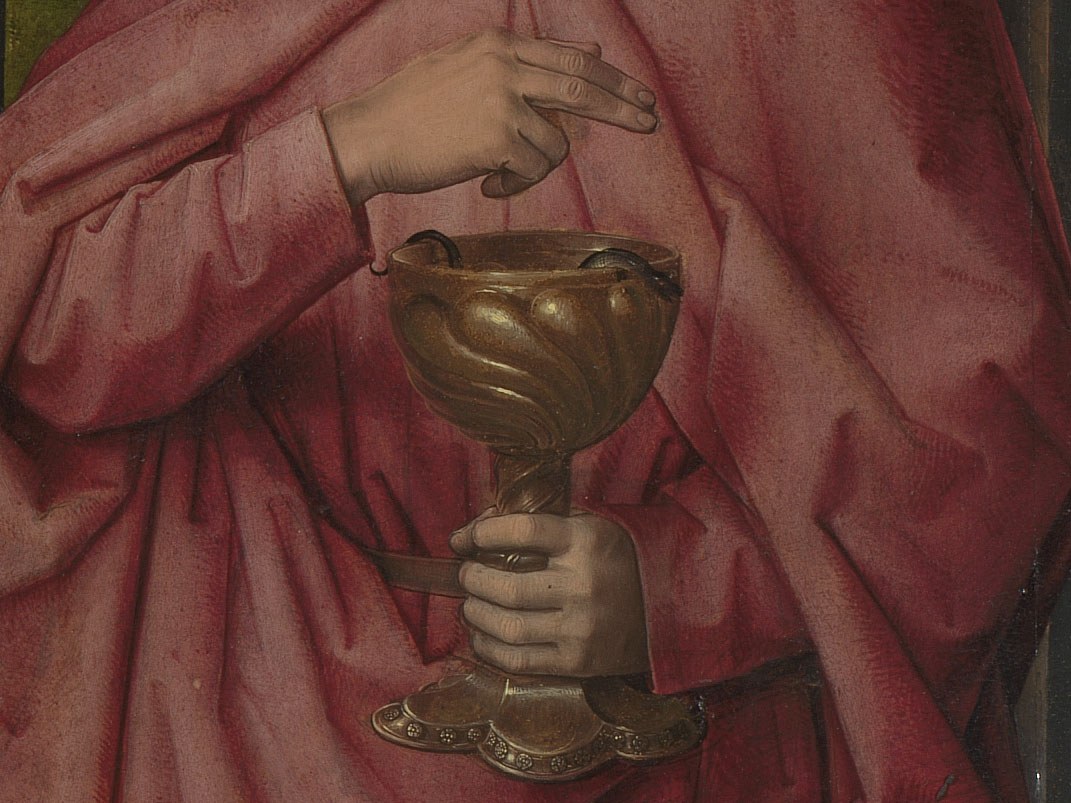
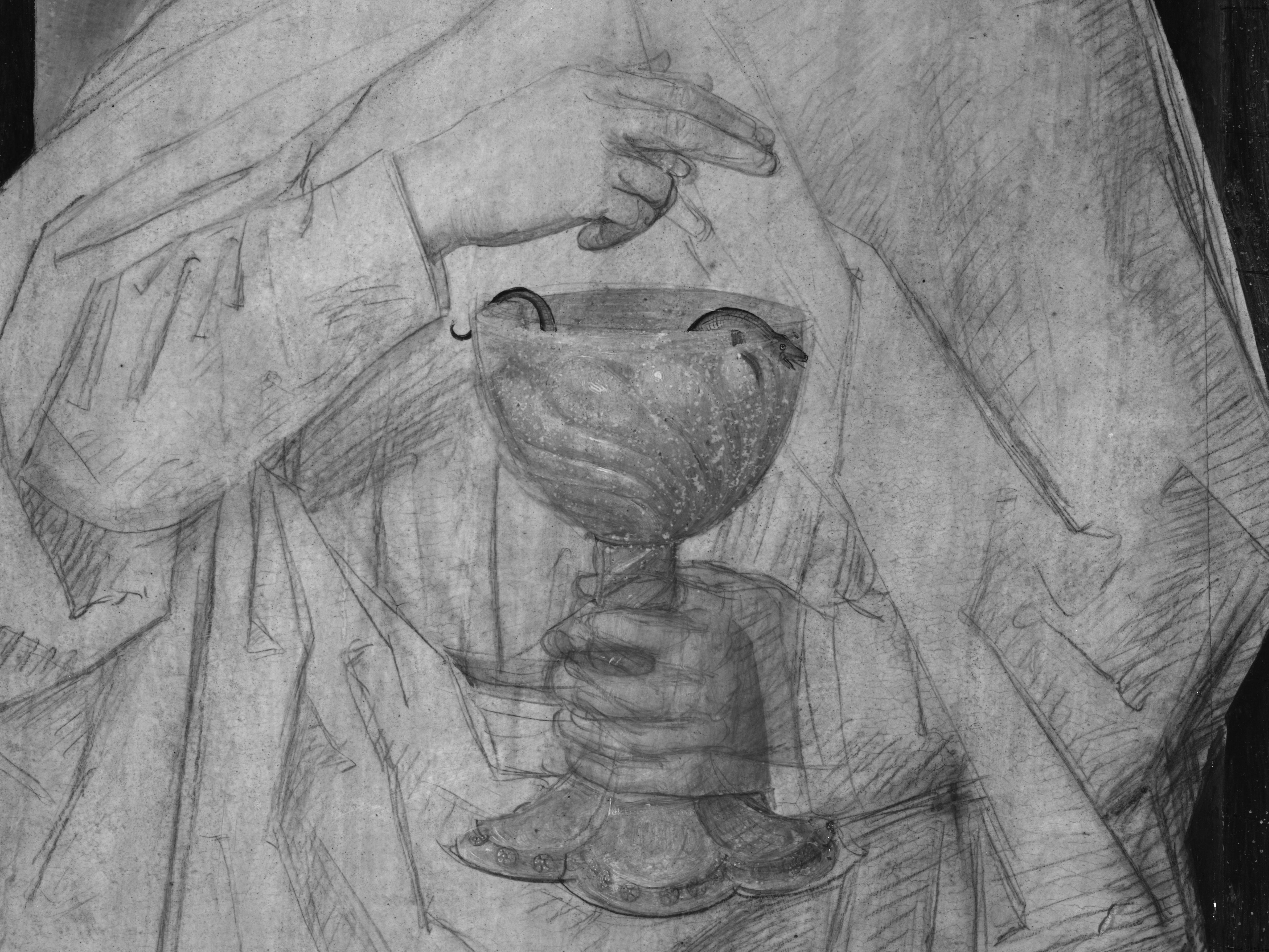
Research technique 3: X-ray photography
Unlike the aforementioned technologies, very little will stop X-rays and they often pass right through a painting. This makes reading a X-ray particularly difficult because you see all the layers of the painting at once. Heavy metals, however, block X-rays. Therefore, the pigment lead white is easily visible on an X-ray, as are nails or ornamentations made from wrought iron. X-ray photography is used to image the construction and structure of the carrier, such as a panel or canvas. They can also be used to assess the condition of paint layers; in fact, areas where paint loss occurs turn dark.
